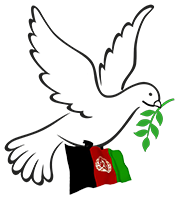 Illustration: Payne, W. H. Letts’s bird’s eye view of the approaches to India. [London: Letts, Son & Co. 19–?], 1900, Map. Library of Congress https://www.loc.gov/item/2006636637/You can preview the report online and download it by clicking here or the download button below.
Illustration: Payne, W. H. Letts’s bird’s eye view of the approaches to India. [London: Letts, Son & Co. 19–?], 1900, Map. Library of Congress https://www.loc.gov/item/2006636637/You can preview the report online and download it by clicking here or the download button below.
The 1920s represent a momentous period in the history of Afghanistan. For long decades, the country had been shut to both major internal socio-economic developments and the outside world. This had come as a consequence of the competition between the Russian and British empires, as well as an internal status quo enforced by Afghan monarchs dependent on subsidies from and peaceful relations with the colonial powers. The scenario was suddenly altered by the ascent to power of a group of more dynamic policymakers centred around the figure of Amir Amanullah, from whose reign (1919-29) this period came to be known as the Amani era.
This period was marked by increased government attempts at radically transforming the country and by the reactions against its project. In more recent times, Amanullah has been identified with the struggle for both national independence (by Afghan governments and rebels of all leanings) and modernisation (by reformist-minded Afghans from liberals to leftists).
However, if some features of the Amani era have, in due time, turned into widely-referenced symbols in Afghan politics, the relevance of this decade’s events to an understanding of the more recent vicissitudes experienced by Afghanistan has never been appreciated enough. This may be due to the fact that it is separated from the political upheavals and conflicts that have shaken the country since the mid-1970s by forty years of comparative stability – largely coinciding with Zaher Shah’s reign (1933-1973). Those forty years have often been portrayed as a ‘golden age’ of peace and prosperity under the cloak of a timeless ‘tradition’ by those, Afghans and foreigners, keen to point to a widely acceptable model to which the country could return. Under the pacified surface, however, the tensions and fault lines that first emerged during the Amani decade never disappeared completely.
During the past five, more recent, decades of turmoil, references to the Amani era have usually been limited to assessing contemporary forces at play in Afghanistan’s political arena and then identifying them with the two ‘camps’ that first emerged in the 1920s – secular reformists vs religious fundamentalists. However, besides the clash between secular and religious leaderships and the competition between state law and sharia, there are other relevant aspects from that era which deserve attention.
During Amanullah’s reign and in its aftermath, issues came to the fore which were to prove central for any subsequent Afghan government. These included: the challenges of developing and funding an efficient state machinery and acquiring a monopoly on violence; the need for foreign economic support and the quest for political independence; the risk that centralisation turns into the imposition of political hegemony by one group over others and that local elites, in turn, defend their power and prerogatives in the name of resisting state oppression. Moreover, Afghanistan’s international relations, which were boosted by Amanullah after he wrested control of the country’s foreign affairs from the British in 1919, started then to become an important arena for the Afghan government to manoeuvre politically and seek economic opportunities. In these years, Afghanistan’s diplomatic relations became a sensitive, multi-polar international matter, calling for the attention and involvement of a greater number of nations across the world.
These issues, recurring nowadays under different circumstances, make it all the more important to look back at all the episodes of that decade, not just the most known and debated. As part of its attempts to understand today’s Afghanistan, AAN has always been keen to return to past events and assess their lasting significance. Likewise, we are happy now to present these two contributions, brought together in a themed report, on a lesser known but pivotal episode of Afghan history on the occasion of its centenary: the Khost rebellion of 1924, which was the first major challenge faced by the reformist project of an Afghan government.
You can preview the report online and download it by clicking here or the download button below.
 Afghanistan Peace Campaign
Afghanistan Peace Campaign